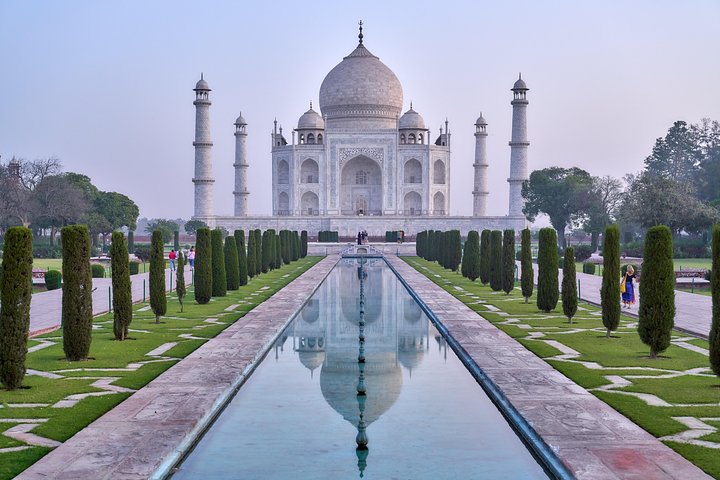Exploring Mughal Majesty: A Historian’s Journey to Agra
Drawn by the allure of the Mughal Dynasty’s architectural wonders, I embarked on a journey to Agra, eager to explore the Taj Mahal and Fatehpur Sikri. Join me as I delve into the rich history and timeless beauty of these iconic sites.
A Journey Through Time: The Mughal Majesty
As a former professor of European history, I have always been fascinated by the intricate tapestry of empires and dynasties that have shaped our world. The Mughal Dynasty, with its rich history and architectural marvels, has long intrigued me. So, when the opportunity arose to embark on the Mughal Dynasty Tour with my wife, I seized it with enthusiasm.
Our journey began in Delhi, where we were warmly greeted by our guide, a knowledgeable historian with a passion for the Mughal era. The drive to Agra was comfortable, and as we approached the city, the anticipation of witnessing the Taj Mahal, a symbol of eternal love, grew stronger. Agra, with its blend of history and artistry, welcomed us with open arms.
The Agra Fort, a red sandstone fortress, was our first stop. Its imposing walls and intricate carvings told stories of power and resilience. As we wandered through its courtyards, I couldn’t help but draw parallels to the castles of Europe, each stone whispering tales of empires past. Our guide’s insights into the Mughal Sultanate’s history enriched our experience, making the fort come alive with the echoes of ancient kings.
The Timeless Beauty of the Taj Mahal
The next morning, we set out to witness the Taj Mahal at sunrise. As the first rays of light kissed the white marble, the monument seemed to glow with an ethereal beauty. Commissioned by Emperor Shah Jahan for his beloved Mumtaz, the Taj Mahal is a testament to love and loss, a theme that resonates deeply with the human experience.
Our guide shared anecdotes about the construction of the Taj, the artisans who toiled to create this masterpiece, and the symbolism behind its design. Standing before this architectural wonder, I was reminded of the great cathedrals of Europe, each a labor of love and devotion. The Taj Mahal, however, stands apart in its poetic grace, a symphony in marble that speaks to the soul.
We spent the afternoon exploring the Mehtab Bagh, a tranquil garden offering breathtaking views of the Taj. As the sun set, the reflection of the monument in the Yamuna River created a scene of unparalleled beauty. It was a moment of serenity, a pause in time that allowed us to reflect on the enduring legacy of the Mughal Empire.
Fatehpur Sikri: A City of Dreams
Our final destination was Fatehpur Sikri, a city built by Emperor Akbar as a testament to his vision of unity and harmony. The red sandstone structures, with their grand courtyards and intricate lattices, spoke of a time when power and faith converged.
Walking through the silent arches of Fatehpur Sikri, I was transported to a bygone era. The city’s architecture, a blend of Persian elegance and Indian craftsmanship, reminded me of the palaces of Europe, each a reflection of the ruler’s aspirations. Our guide’s stories of Akbar’s dream city, his efforts to bridge cultures and creeds, added depth to our exploration.
As we concluded our journey and returned to Delhi, I felt a profound sense of connection to the Mughal Dynasty. The Mughal Dynasty Tour had not only enriched my understanding of this remarkable era but also left me with memories that will linger long after the journey’s end. For those who share my passion for history and architecture, this tour is a must-experience, a chance to step into the past and witness the grandeur of the Mughal Empire firsthand.

















































